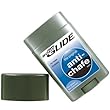Triathletes are notorious gear junkies, and the selections of everything from water bottle holders to tri shorts can be overwhelming for a first timer. What do you really need to do your first sprint triathlon? Surprisingly little!
SWIM:
Suit
Goggles
Swim Cap
Wetsuit (optional)
The first thing you have to think about it the swim. A pair of goggles is highly recommended, and the most important thing to consider is how they fit. Try them on if possible (press them against your eyes and if they stick a moment, they'll probably be fine in the water).
Next you need to decide if you're going to need a wetsuit or not. It's important to find out the predicted water temperature ahead of time and plan for what you're going to need to wear. Tolerance for cold water is highly individual. My personal rule of thumb is that I can tolerate 55 degrees or above in a full sleeve wetsuit, 62 degrees and above in a farmer john (sleeveless) wetsuit, and about 70 degrees and above with no wetsuit. Some races will not allow wetsuits above a certain water temperature (76 degrees is typical).
If you will need a wetsuit, you may purchase one, or rent one. Iron Girl races have wetsuit rental available, and this is an excellent option for first time triathletes.
If you're wearing a wetsuit, you can wear triathlon shorts and a top underneath the suit if you want to, or you can wear a swim suit or one-piece triathlon suit. If you're not wearing a wetsuit, wear something you can swim in, such as
Stay away from non-triathlon wetsuits. I often see first-timers at triathlons in some sort of water skiing wetsuit. These are bulky and difficult to swim in. You may get chafing and other problems from wearing such a suit.

Speaking of chafing, pick up a stick of BodyGlide
Lastly, most races will provide a swim cap, but I always stick an extra one in my bag, just in case.
BIKE
Helmet
Bike
Shoes
Sunglasses (optional)
Gloves (optional)
Obviously, you need a bike to complete a triathlon! If you already have one, you're in business. Many first-timers use a mountain bike or commuter-style bike in their first race and you don't have to worry that you'll be the only one. Make sure it's a bike that you're comfortable on. If you're borrowing a bike, make sure you get the seat and handlebars adjusted to fit you. An improper bike fit can cause knee or back pain, something you definitely don't want!
Helmets are always mandatory in triathlons, and make sure the buckle is secure and will stay so throughout the entire race. You must buckle on your helmet before leaving the bike transition area, so getting used to doing that before every ride is a good idea.
You don't need fancy bike shoes or pedals, but if you have specific pedals/shoes, make sure you are comfortable getting in and out of them.
Sunglasses are optional, but I always wear them in a race to protect my eyes from any road debris or flying bugs. Gloves are also optional. They take some time to put on, especially when your hands are wet from the swim, but some people feel much more comfortable with them on.
RUN
Shoes
Socks
Hat or Visor (optional)
Sunglasses (optional)
Run in shoes that you're comfortable in, that you've trained in, and that are not brand new! Don't buy new shoes just before the race, make sure you've had a couple of weeks to break them in. I always go over my socks before I pack them to make sure there are no splinters or burrs in them. A hat or visor can shade your head on a hot day, and sunglasses are something I always wear for eye protection.
EXTRAS
Watch
Towel
Nutrition and Hydration
First aid kit
Sunscreen
Safety pins
Electrical Tape
Garbage Bags
A watch is a great thing to wear if you want to know how fast you're going. Some folks don't, so it's not mandatory! A towel is something you put down in your transition area for your gear to sit on. I always bring one that I can easily identify.
Depending on how long the race will take you, you may need to bring some food (gels, energy bars) and water or electrolyte mix such as Gatorade, Accelerade, etc. Most races will have water and electrolyte drink on the run course at the least. Many athletes like to pack some kind of protein bar to eat in the transition area about an hour before the start, and one gel to take 10 minutes before the start. In a sprint triathlon, many people find that they don't need to eat anything at all during the race.
Sunscreen is a must-use, as you'll usually be out on the course for at least an hour or more. I always bring emergency items such as a first aid kit (with ibuprofen, band-aids, etc.), electrical tape (for anything loose on the bike), safety pins (for wardrobe malfunctions), and garbage bags (big black ones, in case it rains - you can cover your gear and you can cover yourself.)

3 comments:
OH how I thank you for this post. I am doing my first sprint the last week of august. Didn't think of the garbage bag! Have you ever used compression shorts/socks?
Hi Annette, glad it was useful! Be sure to let me know if you have any questions. I just started using compression socks, I wore them on the bike Saturday but I forgot them on my long run yesterday. I'm interested in if they'll feel any different.
There is a multitude of ways to do super sets and giant sets. You can do two exercises for the same muscle group for hypertrophy and strength. You can pair an upper and lower body exercise with an abdominal exercise to create efficient circuits that challenge your cardiovascular system.
Post a Comment